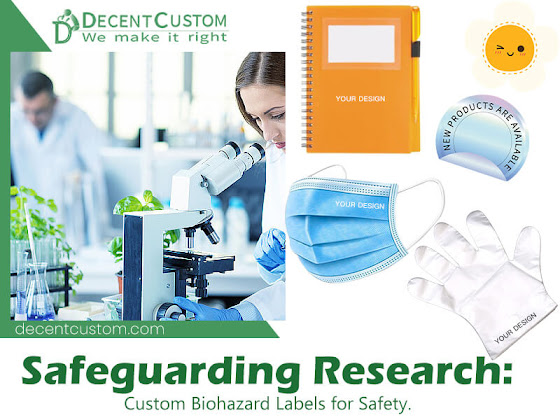Safeguarding the Future of Research: Custom Biohazard Labels for Ultimate Safety
Safeguarding Research: Custom Biohazard Labels for Safety
Safety in research is paramount. With the rise of intricate studies, ensuring that everything in a lab is labeled correctly isn't just a convenience—it's a necessity. Enter custom biohazard labels.
The Critical Role of Safety in Research Environments
When it comes to research, one oversight can lead to monumental setbacks. It's not just about the loss of data; it's about ensuring the well-being of the professionals working tirelessly behind the scenes. In labs and research centers, a minor mislabeling could lead to serious health risks.
Biohazard Labels: More Than Just Stickers
It might be tempting to think of labels as simple stickers, but they're so much more. In a high-stakes research environment, custom stickers bulk serve as vital communicators. They immediately convey the nature of the substance, from its potential hazards to its storage requirements.
How Custom Labels Enhance Research Safety Protocols
Customized labels, like those from Decentcustom, integrate seamlessly into any research facility's safety protocols. With specific, tailor-made information, researchers can quickly identify substances, leading to a streamlined and safer work process.
Real-world Applications: Custom Biohazard Labels in Action
Case 1:
In 2018, a leading research facility in Boston faced a near-disastrous situation. Dr. Elaine Thompson, a molecular biologist, was about to combine two reactive agents. However, thanks to a custom biohazard label, she realized her error just in time. The label, sourced from Decentcustom, detailed the reactivity of the substance, thus averting what could have been a harmful reaction.
Case 2:
John Abernathy, a chemical researcher in Seattle, once shared an incident from 2020. Their lab received a shipment of chemicals with no discernible labels. However, using Custom Holographic Stickers, they were able to quickly and efficiently catalog each chemical, ensuring no mix-ups in the future.
Innovations on the Horizon: Next-Gen Safety Labels
The future is brimming with possibilities. We're not just looking at labels but intelligent indicators that can change color when exposed to certain conditions or even communicate wirelessly with lab management systems. As research evolves, so too must our safety protocols and tools.
Best Practices for Implementing Safety Labeling in Labs
For an optimal safety environment:
- Prioritize clarity: Ensure every label is legible and easily understood.
- Regularly update labels: Ensure that as substances change or get updated, so do the labels.
- Choose quality: Not all labels are created equal. Opt for high-quality ones, like custom products from Decentcustom.
Looking Ahead
As research methodologies evolve and become more intricate, the tools we use must also progress. The humble label, often overlooked, will play an even more critical role in safeguarding the future of research. With companies like Decentcustom leading the way, our research facilities will be better equipped, safer, and more efficient.
FAQ
1. Why are custom biohazard labels crucial for labs?
Custom labels ensure clear communication about a substance's nature and potential hazards, promoting a safer research environment.
2. How do custom labels differ from generic ones?
Custom labels can be tailor-made to include specific details pertinent to the substance and the research, ensuring clarity and efficiency.
3. Where can I get high-quality custom labels for my research facility?
Decentcustom offers a range of custom stickers in bulk, ensuring quality and clarity for research environments.
4. Are there any real-world incidents where custom labels averted a crisis?
Yes, as illustrated in the cases above, custom biohazard labels have played pivotal roles in ensuring safety and preventing potential disasters.
5. What innovations can we expect in the realm of safety labels?
From color-changing indicators to wireless communication capabilities, the future of safety labels is teeming with innovation.





Comments
Post a Comment